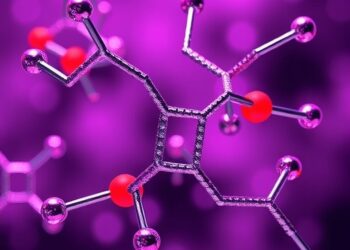(Santa Barbara, Calif.) — UC Santa Barbara researchers are building out the repertoire of chemical reactions, using light. In a paper published in the journal Nature, chemistry professor Yang Yang and collaborators at the University of Pittsburgh report a method using photobiocatalysis to produce non-canonical (not naturally occurring) amino acids that are valuable building blocks of peptide therapeutics, bioactive natural products and novel functional proteins.
(Santa Barbara, Calif.) — UC Santa Barbara researchers are building out the repertoire of chemical reactions, using light. In a paper published in the journal Nature, chemistry professor Yang Yang and collaborators at the University of Pittsburgh report a method using photobiocatalysis to produce non-canonical (not naturally occurring) amino acids that are valuable building blocks of peptide therapeutics, bioactive natural products and novel functional proteins.
“So many efforts have been made in the field of biocatalysis, and we are now at a point where we can rationally design entirely new enzymatic reactions which are unprecedented in either chemistry or biology,” Yang said.
Most efforts in the field of biocatalysis, or the acceleration of chemical reactions via enzymes — nature’s privileged catalysts — have leaned toward optimizing natural enzyme functions that are useful to synthetic chemistry, or repurposing natural enzymes to facilitate unnatural reactions known to synthetic chemistry. Despite a decade of extensive research, there are only a handful of examples of enzymatic reactions that are both new-to-nature and new-to-synthetic chemistry. “What we are interested in is essentially to discover entirely new enzymatic reactions and general modes of enzyme catalysis,” he added.
Enter photobiocatalysis, in which light is used to excite enzymes to generate energy (often in the form of free radicals) to convert one molecule into another. A relatively young field of chemistry, photobiocatalysis takes advantage of the selectivity and efficiency of enzymes and combines that with the versatility and sustainability of light to create new processes, and in this case, non-canonical amino acids.
Interacting catalytic processes
For this study, the research team focused on pyridoxal-phosphate (PLP)-dependent enzymes, a large family of enzymes that are responsible for the metabolism of amino acids. They developed an interacting, triple catalytic cycle in which a photocatalyst — an iridium-based compound — is exposed to light, initiating a process that generates a transient free radical, while a second cycle using light regenerates the photocatalyst.
Concurrently, the biocatalysis cycle using a PLP enzyme modifies the amino acid substrate via a series of activation steps unique to PLP biochemistry. The free radical generated from photochemistry comes into play here, entering the enzyme active site and engaging the enzymatic intermediate to enable new chemistry. This cooperation between the enzyme and the photocatalyst allows the production of non-canonical amino acid product.
The altering of, in this case, common amino acid molecular structures, adds new features and capabilities to these acids. In creating a new carbon-carbon bond to the critical “alpha carbon,” of the amino acid, Yang said, it becomes possible to use this “backbone” to design a range of novel amino acids that could in turn perform new, unique and desirable functions as the basis of new therapeutics and natural products. “This is the first demonstration of pyridoxical biocatalysis via radical-mediated alpha functionalization of abundant amino acid substrates,” Yang pointed out.
Additionally, the highly efficient process is both stereoselective, meaning it can select for a preferred three-dimensional “shape” of the resulting amino acid, and it eliminates the extra steps of adding and removing “protecting groups,” or compounds that mask certain reactive areas on molecules to prevent unwanted chemical reactions in those regions.
“We’ve uncovered interesting interactions between the photocatalyst and the enzyme,” said Yang, whose group is studying how to further improve the interactions between the two catalysts. “I think this is going to lead to new fundamental science, both from a synthetic chemistry standpoint and also an enzymology standpoint.”
Journal
Nature




